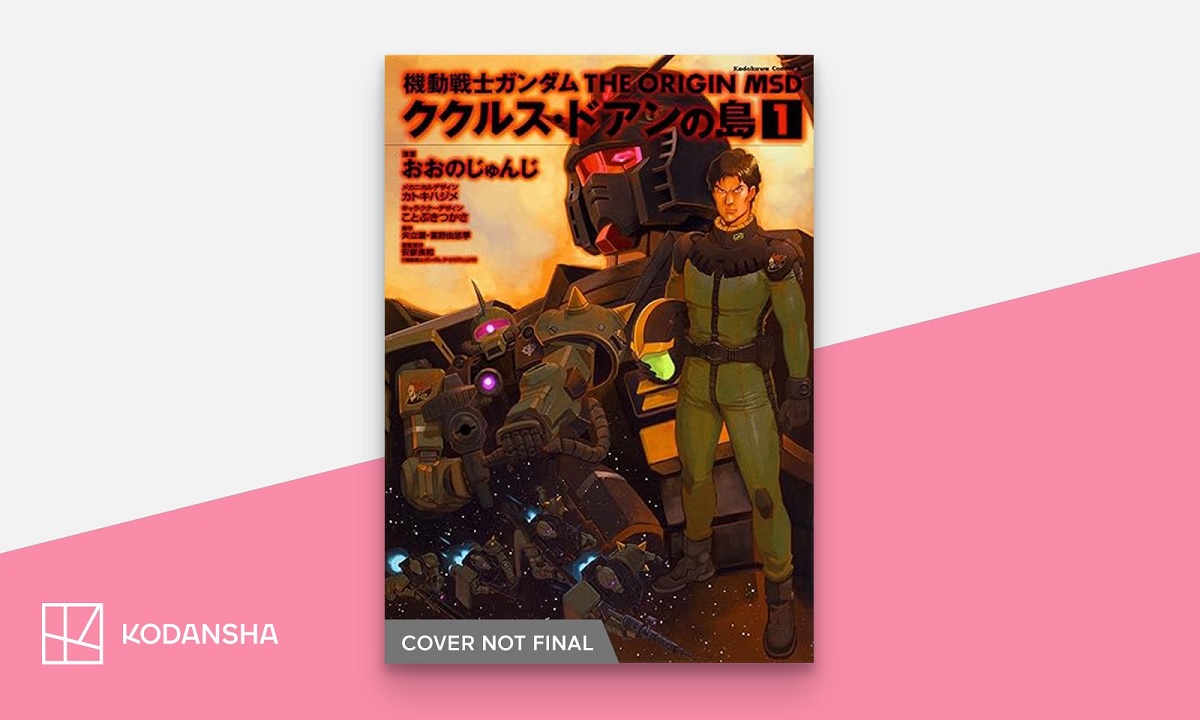
The start of the year’s movie awards season is always a good opportunity to reflect back on what the year has offered to audiences in terms of anime – and what anime continues to offer to viewers. This year, understandably, much of the attention that was directed towards new Japanese animated feature films went to Hayao Miyazaki’s 君たちはどう生きるか / How Do You Live / The Boy and the Heron. But that it was neither the only anime feature film released this year, nor the only one that is receiving recognition now that the awards season has launched. And, perhaps, if The Boy and the Heron represents Japanese animation looking back, the other prominent film that opened this year worldwide – Makoto Shinkai’s すずめの戸締まり / Suzume is inevitably both the present – and the future – of Japanese animation.
And for that matter, in the same way that The Boy and the Heron is the capstone film for Hayao Miyazaki’s career as a director and creator, Suzume, globally successful and critically acclaimed, eligible for the 2024 Academy Awards, and already nominated for the Golden Globes, is a great summation of the work that Shinkai has done up to now, from his first days as a video game artist, through his earliest solo projects, and through more and more sophisticated and elaborate films. So far, Suzume has gathered significant critical attention, though no scholarly responses yet, but watching this film and thinking about it is also a great time to reflect on how scholars are now approaching Makoto Shinkai – because scholars certainly are!

Total: 20 publications (15 journal articles, 5 chapters in edited essay collections)
2023
Izumi, Katsuya. Saviours of the world: Impersonality and success in Shinkai Makoto’s animated films.
In Shih-Wen Sue Chen & Sin Wen Lau (eds.). Representations of children and success in Asia: Dream chasers (pp. 202-211). Abington, UK. Routledge.
- “This chapter analyzes how Shinkai Makoto, a Japanese animation film director, has built a new image of the teenage hero who reflects shifts in cultural values during the Heisei period (1989–2019). Focusing on the teenagers, Mitsuha and Taki, in Your Name. (2016), this chapter argues that impersonality, rather than strong individualism, enables Shinkai’s characters to become heroes in the sekai-kei genre. Shintoism and classical Japanese language constitute the key elements in Shinkai’s concept of impersonality, or the state of an individual character in which they empty themselves to become a medium for others’ agencies and voices.”
Santos, Thátilla Sousa & Satler, Lara Lima. (Re)learn to walk: The melodramatic narrative strategy in Garden of Words. Intercom: Revista Brasileira de Ciências da Comunicação, 46.
- “This article analyzes the development of the character Yukari Yukino in the anime Garden of Words (2013), to present how audiovisual productions that are not part of the melodrama genre use its narrative strategies in the dramatic construction of the works. Therefore, bibliographical research about melodrama was accomplished, and film analysis of excerpts from the animation to identify this resource in the conception of the protagonist’s story. As a result, the analysis indicated how a Western concept (melodrama) can be used in a Japanese animation, contributing to the sentimental charge of the narrative, and facilitating its access, considering that it is spread around the world in different media, such as cinema and streaming platforms.”
2022
Furuhata, Yuriko. Weathering with You: Mythical time and the paradox of the anthropocene. Representations, 157(1), 68-89.
- “This article focuses on the animated Japanese film Weathering with You (2019) in order to think critically about the limits and merits of site-specific, local approaches to the anthropogenic climate crisis, and to the Anthropocene and its mythopoetic tendency. While the geological period of the Anthropocene is thoroughly historical and rooted in the modern scientific paradigm of Earth history, the mythologizing tendency in search of new cosmologies within the discourse of the Anthropocene complicates this linear trajectory of time. Anthropocene discourse invites its critics to revive and reinvent local myths. When these myths appear within the planetary scale of Anthropocene discourse, they take on a cosmological, if not universal, outlook. It is this spatial and temporal paradox of myths within the geological framework of the Anthropocene that this article investigates through the mediation of Weathering with You.”
Gómez Pérez, Francisco Javier, Pérez Rufi, Jose Patricio, & Valverde-Maester, Águeda María. Makoto Shinkai: Japanese animation cinema and construction of dimensional characters. Fonseca, Journal of Communication, 25, 165-179
Teng, Tim Shao-Hung. Time, disaster, new media: Your Name as a mind-game film. New Review of Film and Television Studies, 20(4), 459-488.
- “This essay argues that by deploying the mind-game tropes of body swap and time travel, the Japanese animated film Your Name poses questions of time, memory, and mediation that must be considered in light of the 2011 national disaster. To take up these questions, I juxtapose three lines of interrogation that situate the film at varying timescales. The first analyzes the film’s use of myth to construct a unified timeline that ensures the continuation of national history. This national time, however, is warped into a cosmic scheme. Expounding on the trope of musubi or weaving, the second, mind-game inquiry thus philosophizes time beyond the national framework to better account for the protagonists’ task of historical rescue through radical experiments with fate and contingency. Inspired by the film’s portrayal of skies and clouds, the final inquiry foregrounds the naturalized environment of new media technologies that engages time and memory beyond and beneath the human perceptual frame. To conclude, I provide some critical notes that ask how an ecologically attuned mind-game paradigm anticipates alternative modes of social imagination.”
2021
Cheng, Cathering Ju-Yu. Catastrophism and creation in Shinkai Makoto’s Your Name.
In Joff P. N. Bradley & Catherine Ju-Yu Cheng (eds.). Thinking with Animation (pp. 46-63). Newcastle upon Tyne, UK: Cambridge Scholars Publishing.
Jocoy, Stacey. Kagura dance: The musicality of ritualized dance as historical imaginary in Kimetsu no Yaiba and Kimi no Na wa. Transcommunication, 8(2), 192-202.
Karatsu, Rie. Rewriting 3.11 and feminization of the countryside: National discourse in Shinkai Makoto’s Your Name (2016). Japanese Studies, 41(3), 273-284.
- “This study analyzes national discourses on the representation of the countryside and gender in Makoto Shinkai’s anime, Your Name (2016), a fictional response to larger national policies and an imaginary resolution of post-disaster anxieties that invokes the horrors of the Great East Japan Disaster on 11 March 2011. The first section examines and contextualizes post-disaster anxieties and fears in Your Name (2016), highlighting the way in which the film espouses the national policies on recovery efforts and regional revitalization that are integrally linked to discourses on the revival of essentialist notions of Japan’s traditions and culture. The second section illustrates how these discourses are interrelated with the gendered symbolism attached to the countryside, the savior narrative structure, and memory loss motifs in the film. The results of this investigation suggest that the film’s discourses reinforce the pervasive political structure that places the interests of Tokyo above other regions and legitimatizes this structure in combination with that of gender subordination. This study offers a platform for discussion on the national discourses in post-disaster films as well as the role and function of the countryside and gender in representing the nation.”
Liao, Chaoyang. Time in movement: The knotting of thought in Makoto Shinkai’s Your Name.
In Joff P. N. Bradley & Catherine Ju-Yu Cheng (eds.). Thinking with Animation (pp. 25-45). Newcastle upon Tyne, UK: Cambridge Scholars Publishing.
2020
Han, Grace. Back to front: Animating melodrama in Makoto Shinkai’s Garden of Words. Animation Journal, 15.
[Winner, Society for Animation Studies 2019 Maureen Furniss Award for Best Student Paper on Animated Media]
Tan, Matthew John Paul. Being someplace else: The theological virtues in the manga of Makoto Shinkai. Religions, 11(3), article 109.
Yoneyama, Shoko. Rethinking human-nature relationships in the time of Coronavirus: Postmodern animism in films by Miyazaki Hayao & Shinkai Makoto. The Asia-Pacific Journal: Japan Focus, 18(16), article 6.
2019
Castiglioni, Andrea. From Your Name to Shin-Gojira: Spiritual criscrossing, spiritual soteriology, and catastrophic identity in contemporary Japanese visual culture.
In Fabio Rambelli (ed.). Spirit and animism in contemporary Japan: The Invisible empire (pp. 171-186). London: Bloomsbury Academic.
Thelen, Timo. Disaster and salvation in the Japanese periphery. “The rural” in Shinkai Makoto’s Kimi no na wa (Your Name). FFK Journal, 4, 215-230.
2017
Ward, Sarah. Be careful what you wish for: Makoto Shinkai’s Your Name. Metro, 193, 44-49.
2015
Gradjian, Maria. The precarious self: Melancholia and the eradication of adolescence in Makoto Shinkai’s anime works.
In Kristina Iwata-Weickgenannt & Roman Rosenbaum (eds.). Visions of precarity in Japanese popular culture and literature (pp. 117-131). Abingdon, UK: Routledge.
- “The inseparable linkage between a communal public imagination that is shaped by the popular culture it produces is well known. For instance, when Fritz Lang’s expressionistic film Metropolis was released in 1927, its futuristic machines and robotic figures were connected with the angst of the proletariat in the popular imagination. Arguably, the existence and depiction of the precariat is one of the mainstays of graphic art in general, since the medium was traditionally referred to as a kind of plebeian art in opposition to what was perceived as high-culture fine art. In this sense manga manifested a counter-cultural discourse that pitted the middle and lower classes and their self-directed representation against the hegemony of upper-class representation. The graphic representation of the social withdrawal phenomenon hikikomori in Welcome to the Nihon hoso kyokai (NHK) depicts the burlesque sense of precarity in contemporary Japanese youth culture.”
2014
Duke, Shaun. The multiplicities of empire and the libidinal economy in Makoto Shinkai’s The Place Promised in Our Early Days. Science Fiction Film & Television, 7(3), 387-407.
- “This article places Makoto Shinkai’s Kumo no mukô, yakusoku no basho (The Place Promised in Our Early Days; Japan 2004) within the context of Lyotard’s libidinal economy and the desire-laden structures of empire. The film’s unstable narrative frame, its alternate history context and its focus on the dual figures of Sayuri and the Tower as metaphors and objects of colonial conquest are explorations of the system of desires entailed in the colonial schema, particularly in relation to the question of what it means to map or assimilate over the gendered body. I argue that the film embodies the breakdown of the Eros/death drive equilibrium suggested by Lyotard as part of the decolonisation process and exposes the way in which empires are driven both by conquest and desire, but also by an underlying anticipatory consciousness and self-destruction mechanism which compels colonial subjects to action. Rather than a clean ‘revolution’, however, the film’s climactic moment provides a Lyotardian remainder that rejects the permanence of repetitive revolution.”
2009
Bingham, Adam. Distant voices, still lives: Love, loss, and longing in the work of Makoto Shinkai. Asian Cinema, 20(2), 217-225.
Walker, Gavin. The filmic time of coloniality: On Shinkai Makoto’s The Place Promised in Our Early Days. Mechademia: An Annual Forum for Anime, Manga, and the Fan Arts, 4, 3-18.
*** OPEN ACCESS ***
2007
Kuge, Shu. In the world that is infinitely inclusive: Four theses on Voices of a Distant Star and The Wings of Honneamise. Mechademia: An Annual Forum for Anime, Manga, and the Fan Arts, 2, 251-266.





